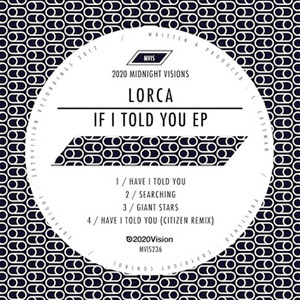Lorca If I Told You EP
At times, it can be hard to describe the music that rising Brighton-based producer Lorca […]

At times, it can be hard to describe the music that rising Brighton-based producer Lorca makes without it sounding—on paper at least—a little generic. Indeed, the vast majority of elements that go into most of Lorca’s tunes are fairly commonplace amongst his UK peers; he works with fractured, late-night garage rhythms, muted synth lines, and reverb-drenched snatches of R&B, none of which are exactly rare amongst the current wave of British electronic artists. Yet on the three-track If I Told You EP, his most substantial release to date, he proves that he has subtle compositional skills that can outstrip many of his peers, and a talent for understatement that sets him apart from herd.
The eponymous a-side is the most dancefloor-friendly cut on the release. On the surface, it’s a relatively straightforward house-meets-garage tune, one driven by a simplistic vocal cut and a low-key synth line reminiscent of Joy Orbison. There’s a deceptive amount of depth to it though; beneath the more obvious elements, Lorca builds a slowly shifting rhythm out of heavily swung snare hits and an evolving backdrop of percussive loops. By the time “If I Told You” reaches its peak, it’s become utterly propulsive, transforming into an infectious piece of rhythmic dance music that sneaks up on the listener.
This talent for subtlety is also displayed on the two b-sides. On “Searching,” Lorca repeats the trick of layering a simplistic vocal and chord progression over a rhythmically interesting backdrop. It’s a more headphone-oriented track than “If I Told You,” however; the beat is far more stripped back, allowing room for interplay between the filtered drum hits and a sporadic, mournful bassline. For “Giant Stars” meanwhile, he intersperses a classic garage beat with several drawn-out synth breakdowns, allowing plenty of room for ambience amidst the vintage 2-step rhythm. Finally, London’s Citizen rounds off the EP with a solid house reworking of the a-side, which replaces the rhythmic complexity of the original with a brilliantly relaxed 4×4 groove.

